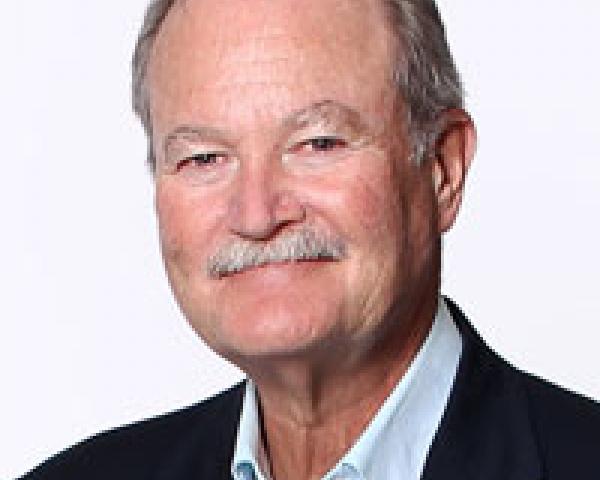A Word With Shefi: Ashili at Smart Drivinc
Smart Drivinc aims to provide peace of mind to parents and others by developing affordable, crash-prevention technologies.

Smart Drivinc aims to provide peace of mind to parents and others by developing affordable, crash-prevention technologies.

Get Involved
Our authors are what set Insurance Thought Leadership apart.
|
Partner with us
We’d love to talk to you about how we can improve your marketing ROI.
|

Shefi Ben Hutta is the founder of InsuranceEntertainment.com, a refreshing blog offering insurance news and media that Millennials can relate to. Originally from Israel, she entered the U.S. insurance space in 2007 and since then has gained experience in online rating models.
At some point, the evidence of death and destruction from our prescription drug abuse epidemic will overwhelm the lobbyists.

Get Involved
Our authors are what set Insurance Thought Leadership apart.
|
Partner with us
We’d love to talk to you about how we can improve your marketing ROI.
|

Mark Pew is a senior vice president at Prium. He is an expert in workers' compensation medical management, with a focus on prescription drug management. Areas of expertise include: abuse and misuse of opioids and other prescription drugs; managing prescription drug utilization and cost; and best practices for weaning people off dangerous drug regimens.
You may think it's IT's job to avoid falling for attractiveness, but soon the majority of IT spending will be the responsibility of others.

Get Involved
Our authors are what set Insurance Thought Leadership apart.
|
Partner with us
We’d love to talk to you about how we can improve your marketing ROI.
|

Paul Laughlin is the founder of Laughlin Consultancy, which helps companies generate sustainable value from their customer insight. This includes growing their bottom line, improving customer retention and demonstrating to regulators that they treat customers fairly.
Texas has always been an Opt In state -- no one need buy workers' comp insurance -- but some mischaracterize Texas in pursuit of an agenda.

Get Involved
Our authors are what set Insurance Thought Leadership apart.
|
Partner with us
We’d love to talk to you about how we can improve your marketing ROI.
|

Bob Wilson is a founding partner, president and CEO of WorkersCompensation.com, based in Sarasota, Fla. He has presented at seminars and conferences on a variety of topics, related to both technology within the workers' compensation industry and bettering the workers' comp system through improved employee/employer relations and claims management techniques.
The Swasthya Slate, costing just $600 and no bigger than a cake tin, performs 33 common medical tests and can be operated with minimal training.

Get Involved
Our authors are what set Insurance Thought Leadership apart.
|
Partner with us
We’d love to talk to you about how we can improve your marketing ROI.
|

Vivek Wadhwa is a fellow at Arthur and Toni Rembe Rock Center for Corporate Governance, Stanford University; director of research at the Center for Entrepreneurship and Research Commercialization at the Pratt School of Engineering, Duke University; and distinguished fellow at Singularity University.
Our long-term goal at Hamilton USA is to get the questions that an agent or broker asks an insured down to two: name and address.

Get Involved
Our authors are what set Insurance Thought Leadership apart.
|
Partner with us
We’d love to talk to you about how we can improve your marketing ROI.
|

Brian Duperreault is chief executive officer of Hamilton Insurance Group, the Bermuda-based holding company of property and casualty insurance and reinsurance operations in Bermuda, the U.S. and the UK. Duperreault was president and chief executive officer of Marsh & McLennan from 2008 to 2012 and, before that, chairman, CEO and president of ACE.
Aggregators collect lots of highly useful data -- but can, for instance, be used by consumers to try what-if scenarios and game their risk ratings.

Get Involved
Our authors are what set Insurance Thought Leadership apart.
|
Partner with us
We’d love to talk to you about how we can improve your marketing ROI.
|

Venkat Ramachandran is industry principal (insurance) with HCL America and has 20-plus years of experience across core operations, business consulting and insurance solutions management.
In designing business models and products for Insurance 2.0, customers should be thought of as <em>intent-driven</em> or <em>opportunity-driven.</em>

 In this post, we’ll look into at the first of these categories—distribution—in more detail.
Distribution
A.M. Best, the insurance rating agency, organizes insurance into two main distribution channels: agency writers and direct writers. Put simply, agency writers distribute products through third parties, and direct writers distribute through their own sales capabilities. For agency writers, these third-party channels include independent agencies/brokerages (terms we will use interchangeably for the purposes of this article) and a variety of hybrid structures. In contrast, direct writer sales capabilities include company websites, in-house sales teams and exclusive agents. This distinction is based on corporate strategy rather than customer preference.
We believe a segment of customers will continue to prefer traditional channels, such as local agents valued for their accessibility, personal attention and expertise. However, we also believe there is an opportunity to redefine distribution strategies to better align with the needs of two developing states of the insurance customer:those who are intent-driven and those who are opportunity-driven. Intent-driven customers seek insurance because they know or have become aware they need it or want it. In contrast, opportunity-driven customers consider purchasing insurance because, in the course of other activities, they have completed some action or provided some information that allows a timely and unique offer of insurance to be presented to them.
There are two specific distribution trends we predict will have a large impact over the coming years, one for each state of the customer described above. These are: 1) the continuing development of online agencies, including “mobile-first” channels and 2) incidental sales platforms.
Online Agencies and Mobile-First Products
Intent-driven customers will continue to be served by a number of response-focused channels, including online/digital agencies. Online insurance agencies operate much like traditional agencies, except they primarily leverage the Internet (instead of brick-and-mortar locations) for operations and customer engagement. Some, like our portfolio company CoverHound, integrate directly with carrier partners to acquire customers and bind policies entirely online.
In addition to moving more of the purchasing process online, we’ve observed a push toward “mobile-first” agencies. By using a mobile device/OS as the primary mode of engagement, the distributor and carrier are able to meet potential customers where they are increasingly likely to be found. Further, mobile-first agencies leverage the smartphone as a platform to enable novel and valuable user experiences. These experiences could be in the application process, notice of loss, servicing of claims, payment and renewal or a variety of other interactions. There are a number of start-up companies, some of which we are partnered with, working on this mobile-first approach to agency.
To illustrate the power of a mobile-first platform, imagine a personal auto insurance mobile app that uses the smartphone camera for policy issuance; authorizes payments via a payment API; processes driving behavior via the phone’s GPS, accelerometer and a connection to the insured vehicle to influence or create an incentive for safe driving behavior; notifies the carrier of a driving signature indicative of an accident; and integrates third-party software into their own app that allows for emergency response and rapid payment of claims.
Incidental Channels
In the latter of the two customer states, we believe “incidental channels” will increasingly serve opportunity-driven customers. In this approach, the customer acquisition engine (often a brokerage or agency) creates a product or service that delivers value independently of insurance/risk management but that uses the resulting relationship with the customer and data about the customer’s needs to make a timely and relevant offer of insurance.
We spend quite a bit of our time thinking about incidental sales channels and find three things about them particularly interesting:
In this post, we’ll look into at the first of these categories—distribution—in more detail.
Distribution
A.M. Best, the insurance rating agency, organizes insurance into two main distribution channels: agency writers and direct writers. Put simply, agency writers distribute products through third parties, and direct writers distribute through their own sales capabilities. For agency writers, these third-party channels include independent agencies/brokerages (terms we will use interchangeably for the purposes of this article) and a variety of hybrid structures. In contrast, direct writer sales capabilities include company websites, in-house sales teams and exclusive agents. This distinction is based on corporate strategy rather than customer preference.
We believe a segment of customers will continue to prefer traditional channels, such as local agents valued for their accessibility, personal attention and expertise. However, we also believe there is an opportunity to redefine distribution strategies to better align with the needs of two developing states of the insurance customer:those who are intent-driven and those who are opportunity-driven. Intent-driven customers seek insurance because they know or have become aware they need it or want it. In contrast, opportunity-driven customers consider purchasing insurance because, in the course of other activities, they have completed some action or provided some information that allows a timely and unique offer of insurance to be presented to them.
There are two specific distribution trends we predict will have a large impact over the coming years, one for each state of the customer described above. These are: 1) the continuing development of online agencies, including “mobile-first” channels and 2) incidental sales platforms.
Online Agencies and Mobile-First Products
Intent-driven customers will continue to be served by a number of response-focused channels, including online/digital agencies. Online insurance agencies operate much like traditional agencies, except they primarily leverage the Internet (instead of brick-and-mortar locations) for operations and customer engagement. Some, like our portfolio company CoverHound, integrate directly with carrier partners to acquire customers and bind policies entirely online.
In addition to moving more of the purchasing process online, we’ve observed a push toward “mobile-first” agencies. By using a mobile device/OS as the primary mode of engagement, the distributor and carrier are able to meet potential customers where they are increasingly likely to be found. Further, mobile-first agencies leverage the smartphone as a platform to enable novel and valuable user experiences. These experiences could be in the application process, notice of loss, servicing of claims, payment and renewal or a variety of other interactions. There are a number of start-up companies, some of which we are partnered with, working on this mobile-first approach to agency.
To illustrate the power of a mobile-first platform, imagine a personal auto insurance mobile app that uses the smartphone camera for policy issuance; authorizes payments via a payment API; processes driving behavior via the phone’s GPS, accelerometer and a connection to the insured vehicle to influence or create an incentive for safe driving behavior; notifies the carrier of a driving signature indicative of an accident; and integrates third-party software into their own app that allows for emergency response and rapid payment of claims.
Incidental Channels
In the latter of the two customer states, we believe “incidental channels” will increasingly serve opportunity-driven customers. In this approach, the customer acquisition engine (often a brokerage or agency) creates a product or service that delivers value independently of insurance/risk management but that uses the resulting relationship with the customer and data about the customer’s needs to make a timely and relevant offer of insurance.
We spend quite a bit of our time thinking about incidental sales channels and find three things about them particularly interesting:
 Despite our confidence in the growth of mobile-first and incidental strategies, we are curious to see how numerous uncertainties around these approaches evolve. For example, how does a mobile-first brokerage create defensibility? How will carriers and their systems/APIs need to grow to work with mobile-first customers? With regard to incidental channels, which factors most influence success—the frequency of user engagement with the third-party app, the ability of data collected through the service to influence pricing, the extensibility of the incidental platform/service to multiple insurance products, some combination of these or something else entirely?
Innovation in how insurance is distributed is an area of significant opportunity. We’re optimistic that both insurers and start-ups will employ the strategies above with great success and will also find other, equally interesting, approaches to deliver insurance products to customers.
Despite our confidence in the growth of mobile-first and incidental strategies, we are curious to see how numerous uncertainties around these approaches evolve. For example, how does a mobile-first brokerage create defensibility? How will carriers and their systems/APIs need to grow to work with mobile-first customers? With regard to incidental channels, which factors most influence success—the frequency of user engagement with the third-party app, the ability of data collected through the service to influence pricing, the extensibility of the incidental platform/service to multiple insurance products, some combination of these or something else entirely?
Innovation in how insurance is distributed is an area of significant opportunity. We’re optimistic that both insurers and start-ups will employ the strategies above with great success and will also find other, equally interesting, approaches to deliver insurance products to customers.
Get Involved
Our authors are what set Insurance Thought Leadership apart.
|
Partner with us
We’d love to talk to you about how we can improve your marketing ROI.
|

Kyle Nakatsuji is a principal at American Family Ventures, the venture capital arm of American Family Insurance, where he is focused on identifying and supporting early-stage companies affecting the future of the insurance industry. American Family Ventures invests across a variety of sectors, including IoT, Fintech, SaaS and data/analytics.
No. 5: Miscoding can render analysis meaningless -- one company didn't know it was paying for 25 organ transplants a year.

Get Involved
Our authors are what set Insurance Thought Leadership apart.
|
Partner with us
We’d love to talk to you about how we can improve your marketing ROI.
|

Tom Emerick is president of Emerick Consulting and cofounder of EdisonHealth and Thera Advisors. Emerick’s years with Wal-Mart Stores, Burger King, British Petroleum and American Fidelity Assurance have provided him with an excellent blend of experience and contacts.
Growth is hard enough in today’s market; it’s harder when your back-office holds you back. Business process outsourcing (BPO) can help.

Life and annuity insurers are focusing on three areas to drive growth: distribution, product and brand. Growth is hard enough in today’s market, but it’s even harder when your back office holds you back, both in terms of fixed costs and limited capabilities. Accordingly, achieving operational efficiency is table stakes for life and annuity insurers competing in an extended soft market. Fortunately, given recent advances in technology and expansion of provider capabilities, business process outsourcing (BPO) has become a feasible way to reduce costs and increase efficiencies.
Based on what we’ve seen in the market, we think BPO providers are ready to move from their traditional role as vendors to true business partners. With scale, advanced technology and money to invest, the best of them offer great opportunity for insurers to significantly lower costs and benefit from complementary services over the long term.
Why BPO and why now?
For years, insurers have tried numerous methods to achieve greater operational efficiency, including process reengineering, Six Sigma, and LEAN. Many companies also have pursued sourcing (primarily in IT) to stem the tide of rising fixed costs. While these initiatives have reduced costs and complexity to a certain extent, they have not lowered costs and operational complexity enough to enable the business to focus first and foremost on growth.
Fortunately, times have changed. Some BPO providers have recently offered savings on a per-policy basis (inclusive of both operational and IT costs) of anywhere from 20% to 40%. (Benefits depend on how much savings a company has already realized and how much additional opportunity for savings remains.) BPO now offers the potential for greater long-term cost reductions and efficiencies than the methods insurers have used in the past.
In Europe, BPO and ITO (information technology outsourcing) has already played a major role in closed block businesses. Life, annuity and pensions BPO has a global market of more than $2.6 billion, nearly half of it in the U.K. In this case, the main point of BPO has been legacy policy cost reduction, but it also offers carriers an alternative operational platform for achieving faster speed to market for new products and for tapping into advanced customer service capabilities.
Legacy modernization is another important reason for considering BPO. As key staff retire, there is a real threat of knowledge loss, not least because legacy systems are concurrently moving toward the end of their effective working lives. Many BPO providers feature up-to-date and evolving technology platforms that are an attractive alternative to incurring continuing fixed costs in-house.
The key for carriers is to select a BPO provider that will keep its platform current rather than simply provide a “your mess for less” service (i.e., administration of your aging platforms). Without the right scope, BPO can backfire and actually result in a more complex operating model, with resulting stranded costs and a suboptimal customer experience.
What is large-scale BPO?
To understand what BPO entails, it is helpful to compare the different kinds of shared services that are available:
BPO is not one-size-fits-all. There are different varieties that insurers can match to their individual goals and circumstances.
Managing retained alongside sourced business
While moving the entirety of operations and IT to a BPO provider may seem appealing, insurers realistically will continue to be involved in many operational and IT activities. They often will retain key components of their operations and IT that they deem to be market differentiators. These most often relate to the customer experience (both with the agent and insured) and include call centers, portals and analytics.
To remain effective, the operational platform that support retained components will continue to require maintenance, upgrades and BPO integration. Extensive up-front effort will be necessary to promote seamless integration of retained and outsourced components. In addition, despite inclusion of a broad scope of operations and IT components, certain operational functions will remain with the insurer, namely HR, legal and compliance.
Given significant sourcing, the question is if the insurer’s reliance on these functions will decrease and, if so, how to shrink them without increasing operational risks like:
A good way to reduce the chance of BPO-related risks is to insist on a provider that comports with advanced service organization control (SOC) reporting. SOC 2 provides assurance that the provider has controls around the sourced technology and systems supporting the sourced business processes, but only to a pre-defined audience. SOC 3 provides the same assurance but more broadly to anyone interested in the provider’s control and allows the posting of a public seal on the provider’s website.
Embarking on BPO: An end-to-end approach
Given the significant potential for disruption to distribution partners, policy/annuity holders, employees and the community at large, BPO requires a more iterative approach to execution than many other forms of operating model transformation. When evaluating BPO partners that best match criteria for in-scope functions and blocks of business, some carriers find that a single BPO partner may not meet all needs. Accordingly, it is imperative to determine the best BPO fit for each block of business.
Implications: Insights from BPO initiatives
Get Involved
Our authors are what set Insurance Thought Leadership apart.
|
Partner with us
We’d love to talk to you about how we can improve your marketing ROI.
|

Paul Livak is a director in PwC Advisory’s financial services practice. He is an experienced management strategy consultant with 15 years of experience focused on insurance and financial services. Particular areas of expertise include incentive compensation management (strategy through execution), optimizing transparency for sales producers, business intelligence and operations and IT transformational strategy.

Bruce Brodie is a managing director for PwC's insurance advisory practice focusing on insurance operations and IT strategy, new IT operating models and IT functional transformation. Brodie has 30 years of experience in the industry and has held a number of leadership positions in the insurance and consulting world.